Medspa Treatments vs. Plastic Surgery FAQ With Dr. Aspinder Singh
Dr. Aspinder Singh breaks down exactly what nonsurgical medspa treatments can (and can’t) do, and how to identify when a lift, fat grafting, or neck contouring is better for achieving your goals.
.jpg)
When should I move from medspa treatments to surgery?
Consider surgery when you’re no longer seeing meaningful results or when your anatomy requires something stronger than skincare, injectables, or devices. If you’re experiencing diminishing returns from injectables—meaning each treatment helps less than the one before—it may be a sign that you’ve reached the limit of what nonsurgical options can do. Some signs of aging come from deeper structural changes that fillers, toxins, or skin treatments simply cannot correct, such as sagging tissues or volume loss. If you’re looking for longer-lasting, more predictable results, surgical procedures often provide outcomes that nonsurgical treatments cannot replicate.
Key Takeaways:
- Diminishing results signal you may have “maxed out” medspa options.
- Structural aging can’t be fixed by injectables alone.
- Surgery provides longer-lasting, more predictable improvements.
- A consultation helps determine whether a nonsurgical or surgical path is best.
What causes under-eye hollows, darkness, or bags—and what treatment works best?
Under-eye concerns come from thin skin, fat changes, and muscle anatomy. These causes can typically be addressed with PRF, fat grafting, skin treatments, or surgery. Traditional fillers can often look unnatural in the under-eye area because the skin is extremely thin, and any material placed beneath it may appear puffy, visible, or discolored. More natural-looking options include PRF injections, which release growth factors slowly, and fat grafting, which restores soft volume using your own tissue. Skin-improving treatments like microneedling and chemical peels can help thicken the skin, brighten darkness, and smooth fine lines. True under-eye bags, caused by fat pads pushing forward, require lower blepharoplasty surgery to reposition or remove the fat for the most effective result.
Key Takeaways:
- Under-eye filler often leads to puffiness or discoloration.
- PRF and fat grafting offer more natural, long-term results.
- Skin-focused treatments help with darkness and texture.
- Under-eye bags require surgical correction for best results.
.jpg)
What does a surgical brow lift do that Botox cannot?
A brow lift repositions tissue long-term, while wrinkle relaxers, like Botox, only relax muscles temporarily. Botox works chemically by weakening specific muscle fibers to create a soft, subtle lift, but it cannot physically reposition tissue. A surgical brow lift, on the other hand, elevates the brow structurally, restoring youthful positioning that Botox alone cannot achieve. Patients who no longer get the same lifting or brightening effect from Botox often benefit more predictably from surgery. Unlike neurotoxin/wrinkle relaxer results—which typically last around three to four months—a brow lift offers improvements that last for many years.
Key Takeaways:
- Botox lifts by relaxing muscles, not repositioning tissue.
- A brow lift restores true brow height and eyelid openness.
- Surgery is ideal when Botox results plateau or fade quickly.
- Surgical brow lift results last significantly longer.
.jpg)
When is it time for a facelift?
A facelift is best when deeper structures—like cheeks, jowls, and neck—start to sag beyond what injectables can correct. Signs such as jowling, deep folds around the mouth, or loss of cheek volume signal that the underlying facial structures have shifted and require a surgical approach. Patients in their 40s,50s, and 60s who experience noticeable sagging and flattening of their features may be excellent candidates for a facelift.
Key Takeaways:
- Jowling and deep folds are major facelift indicators.
- Injectables can’t lift descended tissue.
- Younger patients may only need targeted surgeries.
- Facelifts address the root cause of facial aging.
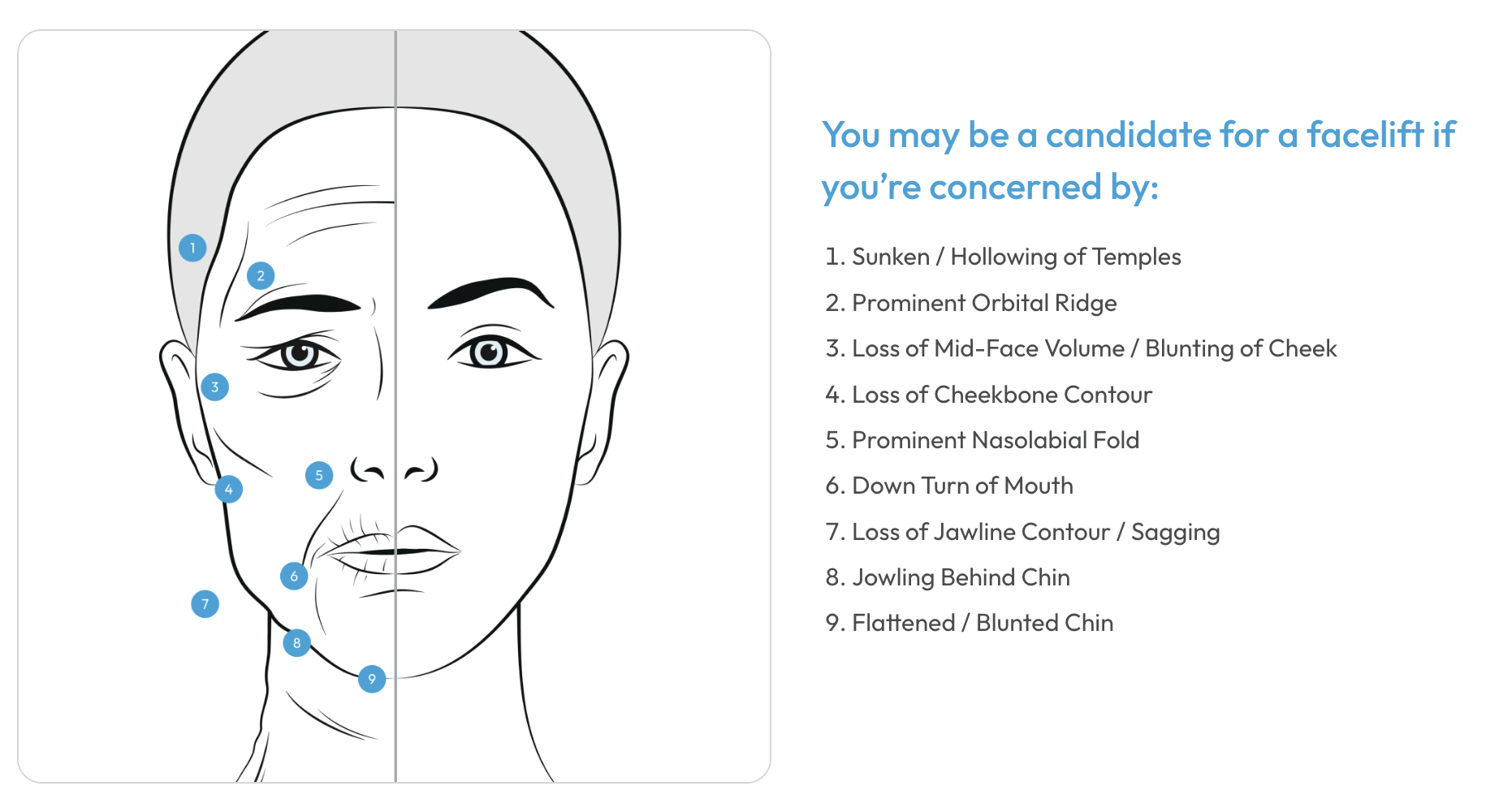
What is facelift recovery like today?
Modern deep-plane facelifts heal faster and look more natural than older techniques. Today’s surgical approach lifts the skin and muscle together as a single unit, which maintains blood supply, reduces tension, and leads to more stable healing. Because of these improved techniques, patients experience significantly less bruising and swelling than facelifts from decades past. Most patients feel comfortable returning to social activities within one to three weeks, with continued refinement over time.
Key Takeaways:
- Deep-plane techniques reduce trauma and improve healing.
- Less bruising and swelling than in older methods.
- Most patients resume normal activities in 1–3 weeks.
- Results look natural, not tight or “pulled.”
What can be done for neck laxity or fullness?
Early aging responds to Botox and skincare, but true contouring requires a neck lift. In the early stages, nonsurgical treatments such as lasers, microneedling, retinol, and Botox to soften neck bands can improve skin texture and mild laxity. For more advanced concerns, a deep neck lift can precisely address deeper fat deposits, enlarged glands, prominent muscles, or platysmal banding. Surgical neck contouring offers the most predictable and transformative long-term improvement, especially when multiple deeper structures contribute to the fullness.
Key Takeaways:
- In some cases, early neck aging can be treated non-surgically.
- A deep neck lift addresses all underlying structures.
- Surgery offers the most defined, long-lasting contour.
- Ideal for patients with small chins, fullness (double chin/turkey neck), or banding.
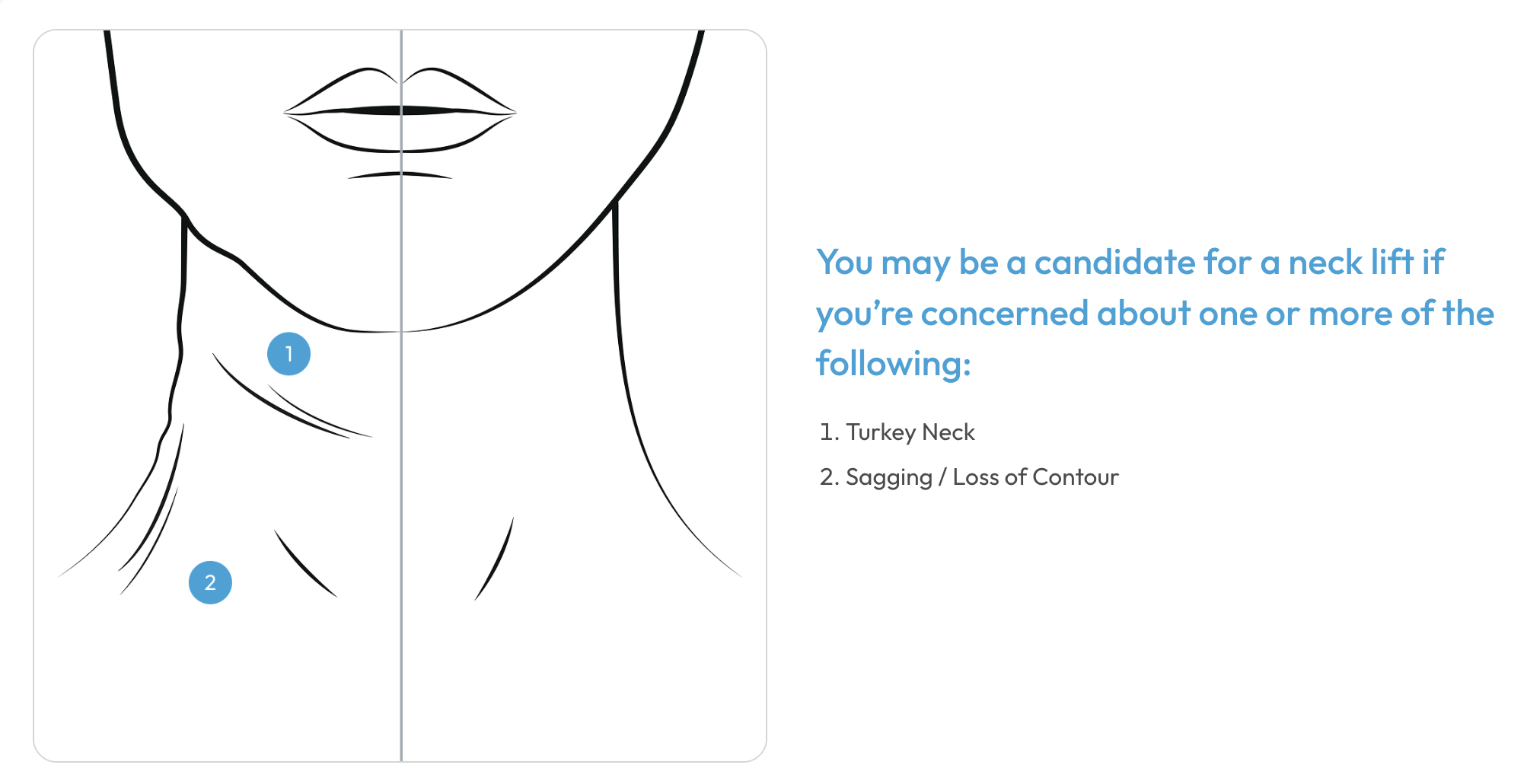
Which is better for under-chin fat: Kybella, liposuction, or a neck lift?
For many patients concerned by a double chin/submental fullness, Kybella is generally not recommended. Liposuction addresses fullness and is typically best for those without significant excess skin. A neck lift addresses fullness, excess skin, and underlying muscle separation for complete contouring. Kybella tends to produce unpredictable results because it dissolves fat non-selectively, and it also carries a risk of nerve irritation or prolonged swelling. Double chin liposuction can be a great option for patients who have isolated fat under the chin and naturally good skin elasticity. A neck lift provides the most comprehensive and sculpted result by addressing not only fat but also glands, muscle, and skin laxity for a more defined jawline.
Key takeaways:
- Kybella has higher risks and less consistent results.
- Liposuction works well for those with good skin quality.
- Neck lifts treat all contributing structures.
- Neck lifts create a sharper, longer-lasting definition.
What makes a good medspa?
A great medspa combines skilled providers with a surgeon who can offer guidance when nonsurgical options are no longer enough. A well-run medspa should have a dedicated medical director who oversees safety, protocols, and treatment planning. Its providers should have a deep understanding of facial anatomy, how to perform treatments, and when surgery is needed to achieve your goals. A quality medspa should also offer a full range of treatment options, including both nonsurgical solutions and easy access to surgical consultations when appropriate. Most importantly, patients should receive honest, pressure-free guidance rather than being upsold products or treatments that aren’t the best fit for their goals.
Key Takeaways:
- Look for a medspa with surgical oversight and strong anatomical knowledge.
- A complete nonsurgical and surgical treatment menu creates better outcomes.
- Honest assessments help prevent wasting money on treatments that won’t work.
- A plastic surgeon on-site ensures a smooth transition when surgery becomes the better option.

Is neurotoxin (Botox) resistance real?
Yes, patients can experience reduced responsiveness, but switching brands often helps.Long-term use of neurotoxins can gradually decrease their effectiveness, causing results to fade sooner or lifting effects to weaken. Different wrinkle relaxer brands, also known as neurotoxins (like Botox, Dysport, Xeomin, and Daxxify), bind to nerve receptors in unique ways, which means your body may become resistant to one but respond well to another. Because more people are starting neurotoxin treatments earlier in life and maintaining them consistently, resistance is becoming increasingly common.
Key Takeaways:
- Results lasting shorter than usual may indicate resistance.
- Switching brands often restores effectiveness.
- A licensed, experienced injector can guide you on which neurotoxin your body may respond to best.

Do under-eye creams actually work?
Creams support skin health but won’t fix hollows, dark circles, or bags. When choosing an under-eye product, it’s best to focus on active ingredients rather than brand names, since the right formulation matters more than the label. A licensed provider, dermatologist, or plastic surgeon may recommend a combination of moisturizer, sunscreen, retinol, and antioxidant serums like vitamin C to support skin health. These products help with maintenance, hydration, and surface brightness, but they cannot correct deep hollows, prominent fat pads, or muscle-related shadowing.
Key takeaways:
- Skincare maintains results but can’t correct anatomical concerns.
- SPF, retinol, and vitamin C support long-term skin health.
- Creams improve texture, not volume or fat pads.
- Persistent concerns usually need a procedural solution.
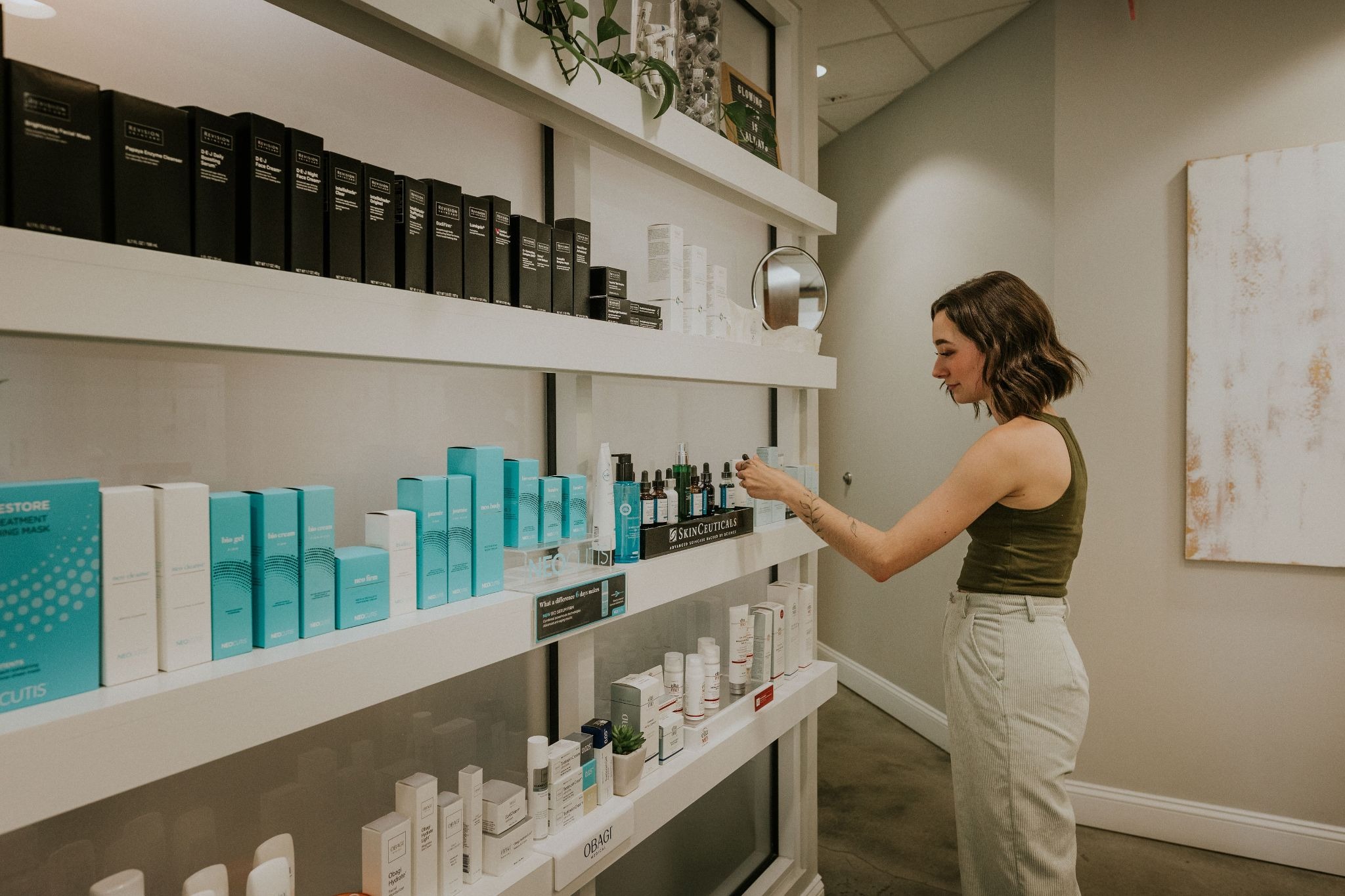
What non-surgical treatments help tighten skin?
Skin tightening comes from treatments that stimulate collagen through controlled injury. Mechanical treatments like microneedling, dermapen, and micro-coring create tiny micro-injuries in the skin, encouraging collagen production and improving texture. Thermal treatments such as Halo or CO2 lasers use heat to resurface the skin and tighten early laxity while refining pigmentation and fine lines. Chemical peels remain one of the most cost-effective and reliable ways to exfoliate damaged skin, address discoloration, and stimulate collagen for smoother, brighter results.
Key Takeaways:
- Microneedling boosts collagen and smooths texture.
- Lasers tighten skin and refine tone and pigmentation.
- Chemical peels offer dramatic resurfacing at a lower cost.
- Most patients benefit from combining modalities.

Should I get a lip flip, lip filler, or lip lift?
Filler adds volume, a lip flip increases lip show, and a lip lift shortens an elongated upper lip. Lip filler is ideal for shaping, defining the borders, and adding soft volume, especially for patients wanting a fuller appearance without surgery. A lip flip uses small amounts of a wrinkle relaxer such as Botox to gently relax the upper lip muscle, allowing the lip to roll slightly outward and show more without adding volume. A lip flip is great for treating “gummy smiles”. A lip lift is a surgical procedure designed for patients with an elongated distance between the nose and upper lip, providing a permanent lift that filler or Botox cannot mimic. Younger patients are generally not good candidates for lip lifts because they tend to scar more visibly and rarely have the anatomical changes that make the surgery beneficial.
Key Takeaways:
- Choose filler for volume and shaping.
- Choose a lip flip for a subtle lift without added fullness.
- Choose a lip lift for a structural, permanent change.
- Lip lifts are typically better for mature patients.
.jpg)
Which lasts longer—filler or fat grafting?
Fat grafting offers long-lasting results, while filler is temporary but better near the mouth. Filler is ideal for the lips and areas with frequent movement, where fat may not survive as well or may feel firmer than desired. Fat grafting is best for the cheeks, temples, under eyes, and hands because these areas benefit from the soft, natural fullness that fat provides. Unlike filler, transferred fat can improve the quality of the overlying skin due to its regenerative properties, making it both restorative and long-lasting.
Key Takeaways:
- Filler is temporary and best in high-movement areas.
- Fat grafting can last for years once healed.
- Fat improves both volume and skin quality.
- Each option has ideal areas depending on anatomy.
Curious about the best route for you?
A one-on-one consultation is the best way to know what treatments are right for you. Dr. Singh specializes in natural results that enhance and restore to keep you looking like you. At your consultation, you’ll discuss surgical and non-surgical options to achieve your goals today and for years to come.
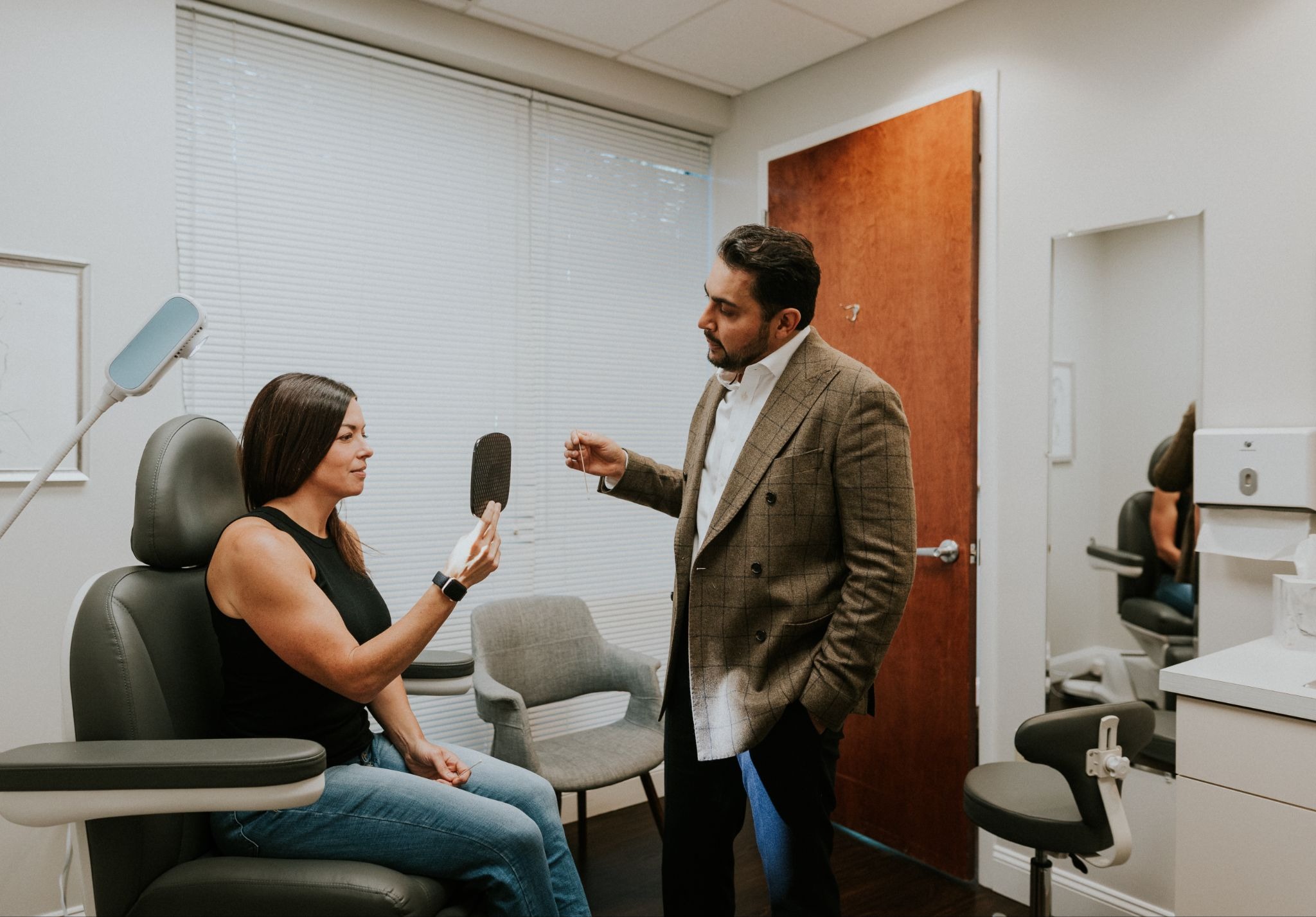
Prefer to watch? Stream Bustmob's Medspa vs. Plastic Surgery Q&A with Dr. Singh.

Ready to start your journey?
.jpg)





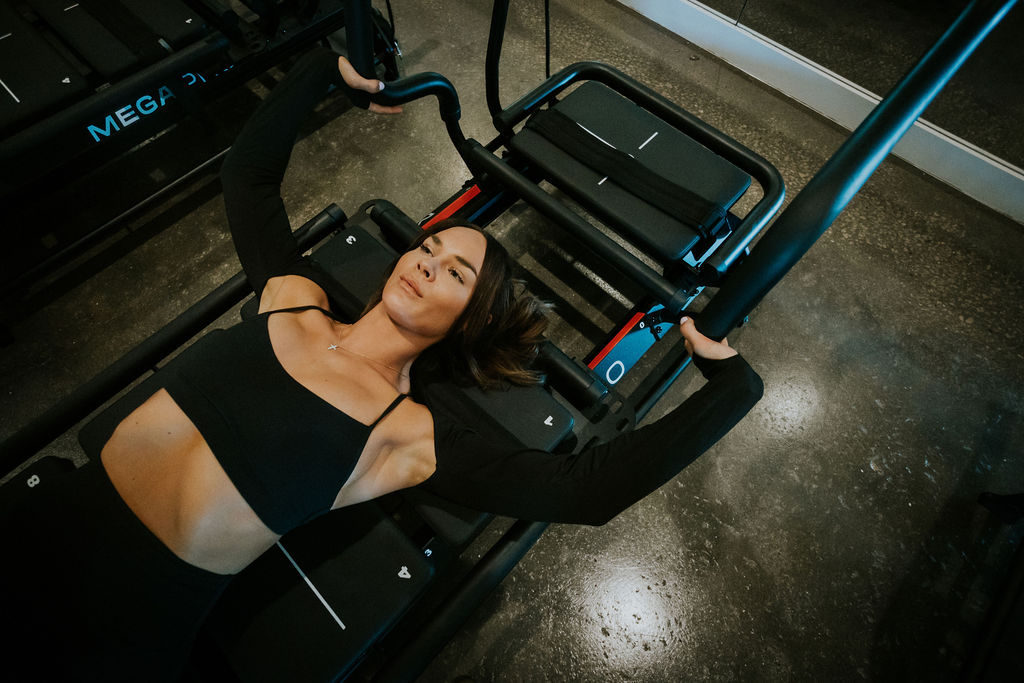
.jpg)



